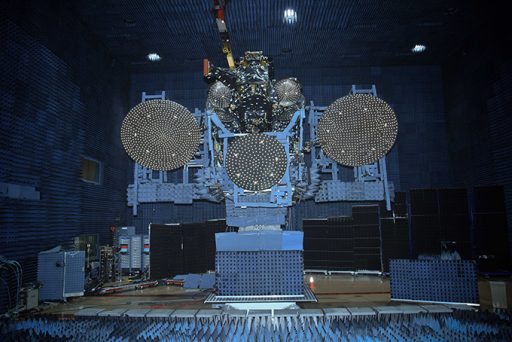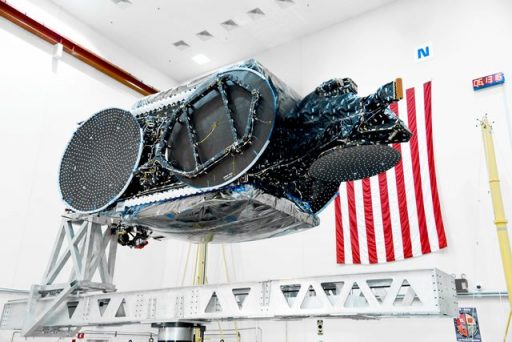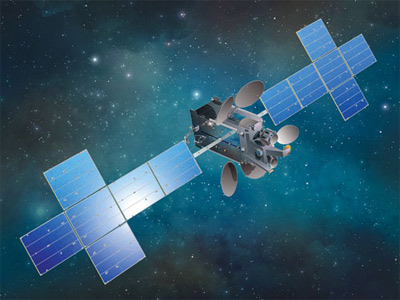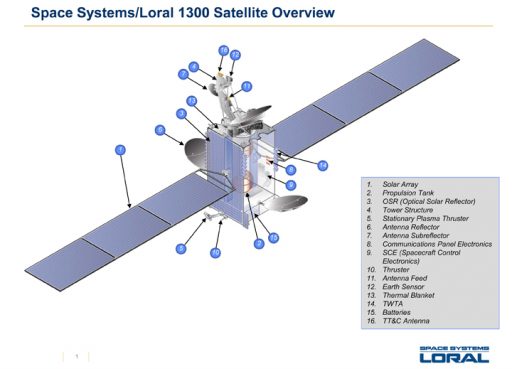EchoStar-23 Satellite

EchoStar-23 is a commercial communications satellite built by Space Systems/Loral and operated by U.S.-based EchoStar Corporation to expand the company’s Direct Broadcasting Services, primarily focused on markets in South America.
The tri-band satellite has been designed to provide multi-mission capability, built to deliver services from any of eight different orbital slots – giving EchoStar a flexible tool to quickly respond to changing market demands by relocating the satellite’s capacity. Its communications payload hosts 32 Ku-Band transponders as well as Ka- and S-Band components.
Space Systems/Loral announced in April 2014 that it was selected to build the high-power EchoStar 23 satellite. It utilizes the satellite bus from the suspended CMBStar satellite project which started out in 2006 as a joint project between EchoStar and China to deliver mobile video services that China wanted to have available for the 2008 summer Olympics held in Beijing.


The project ultimately stalled for a combination of regulatory and technical issues with the platform entering long-term storage in the first half of 2008.
EchoStar-23 has a reported launch mass of over 5.5 metric tons and is aiming for an initial operating slot of 44.9 degrees West in Geostationary Orbit it will reach after spending three months at 86.4°W for detailed post-launch checkouts.
The satellite will initially operate under a Brazilian government license to deliver direct-broadcast television services via its Ku-Band payload and offer various data and networking services via the satellite’s Ka and S-Band capabilities.
Initially expected to launch in 2016, EchoStar 23 had to remain grounded due to a stand-down in Falcon 9 launch operations after a September 1st testing accident – bringing the satellite close to regulatory deadlines by the Brazilian government with the company subject to penalties if not meeting in-service dates by the second quarter of 2017 for all of the satellites frequency bands.
Given its launch mass and target Geostationary Transfer Orbit, EchoStar-23 will fly on a fully expendable Falcon 9 rocket – one of the last of its kind as future payloads, with maybe one or two more exceptions, will either fly on the Falcon Heavy tri-core rocket that can land all of its cores or the Falcon 9 Block 5 vehicle which will have a slight performance increase sufficient to lift EchoStar-23-class payloads with booster recovery.


LS-1300 is a flexible satellite platform that can be flown in different configurations to accommodate different communication payloads with a total power of 5 to 20kW. Using different configurations, LS-1300 satellites can weigh from 2,200 up to 6,700 Kilograms featuring payloads of 12 to 150 transponders. LS-1300 was introduced in the late 1980s, but undergoes constant modifications going through a number of revisions over the years.
EchoStar 23 uses the high-power variant of LS-1300, featuring two five-panel solar arrays that deliver over 15kW of power to a dedicated system that conditions the satellite’s power bus and controls the state of charge of the vehicle’s batteries. Three-axis stabilization and navigation is accomplished by state of the art navigation sensors and reaction wheels.
The satellite is equipped with a chemical propulsion system for orbit-raising and stationkeeping using a main apogee engine and a series of attitude control thrusters. Additionally, EchoStar 23 sports an electric propulsion system for stationkeeping maneuvers in Geostationary Orbit, offering a prolonged satellite life given savings in chemical propellants. Four SPT-100 Stationary Plasma Thrusters are installed on the satellite each delivering a nominal thrust of 83 Millinewtons.
EchoStar 23 has been designed for the typical industry-standard service life of 15 years, however, the use of an electric propulsion system can extend the satellite’s life by several years beyond the 15-year mark, also enabling frequent orbital changes that might be required by this multi-mission satellite.
